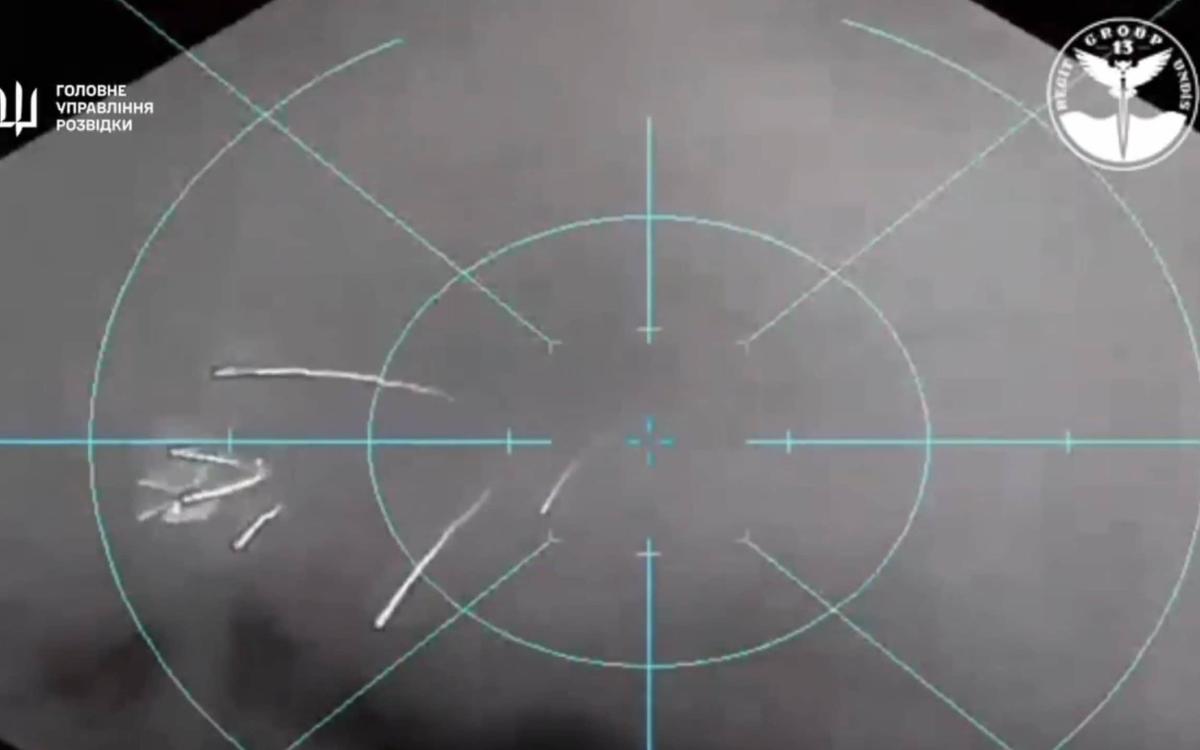Ukrainian sea drones are rapidly changing naval warfare. These unmanned vessels, ranging from small, expendable craft to more sophisticated autonomous systems, are proving surprisingly effective. This exploration delves into their technology, operational use, design, future potential, and broader implications.
We’ll examine the various types of Ukrainian sea drones, their capabilities and limitations compared to those of other nations, and their impact on naval strategies. We’ll also discuss the ethical and economic considerations surrounding their use, exploring both the military and civilian applications.
Ukrainian Sea Drone Technology
Ukraine’s burgeoning sea drone program represents a significant development in asymmetric warfare capabilities. While lacking the extensive resources of major naval powers, Ukraine has demonstrated ingenuity in developing effective and relatively inexpensive unmanned maritime systems. This technology plays a crucial role in its defense strategy, offering a potent counter to larger, more established navies.
Current State of Ukrainian Sea Drone Technology
Ukrainian sea drone technology is characterized by its adaptability and cost-effectiveness. Capabilities include reconnaissance, mine-laying, and attacks on naval vessels. Limitations include shorter operational ranges compared to larger, more sophisticated drones from other nations, and a potential vulnerability to electronic countermeasures. The technology is rapidly evolving, however, with ongoing improvements in autonomy, payload capacity, and survivability.
Comparison with Other Nations’ Sea Drone Technology
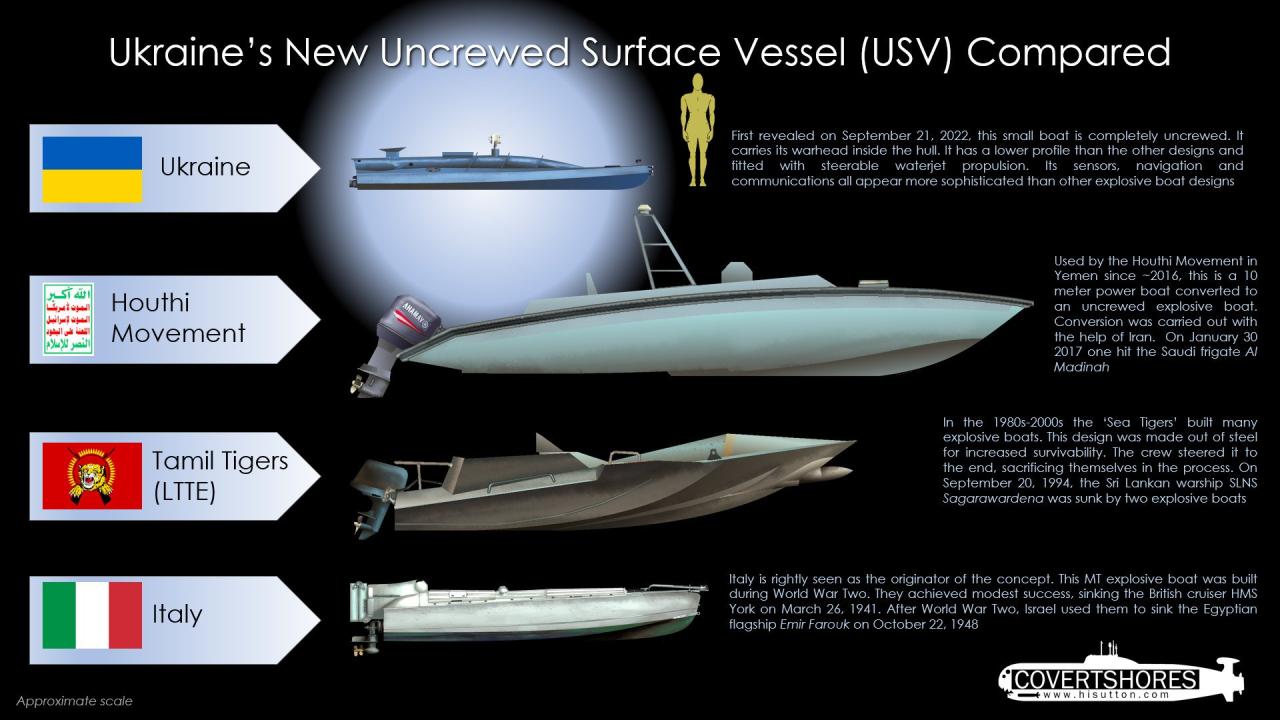
Compared to major naval powers like the US, Russia, or China, Ukrainian sea drone technology is less advanced in terms of sophistication and overall scale of deployment. However, Ukraine’s designs often prioritize affordability and adaptability to specific operational needs, making them a surprisingly effective tool in the current conflict. This contrasts with the often larger, more expensive, and specialized systems fielded by larger nations.
Types of Ukrainian Sea Drones and Their Applications
Ukraine employs various sea drone types tailored for different missions. These include smaller, expendable drones for kamikaze attacks, larger drones capable of carrying heavier payloads for reconnaissance or mine-laying, and potentially, drones equipped with more sophisticated sensors and communication systems.
Ukrainian sea drones are causing a stir, showing how adaptable technology can be in modern warfare. It makes you wonder about unexpected twists, like figuring out who is 001 in squid game season 2 who is 001 in squid game season 2 , which is a whole different kind of suspense! Similarly, the impact of these drones on naval strategy remains to be fully seen, making them a fascinating area of military tech to follow.
Specifications of Ukrainian Sea Drone Models
| Model | Size (approx.) | Payload (approx.) | Range (approx.) | Speed (approx.) | Propulsion |
|---|---|---|---|---|---|
| Model A (Hypothetical) | Small, boat-like | 50 kg explosives | 50 km | 15 knots | Electric motor |
| Model B (Hypothetical) | Medium, surface vessel | 100 kg reconnaissance equipment | 100 km | 10 knots | Internal combustion engine |
| Model C (Hypothetical) | Large, semi-submersible | 200 kg mines/equipment | 200 km | 8 knots | Diesel-electric hybrid |
Operational Use of Ukrainian Sea Drones
Ukrainian sea drones have been deployed extensively in the ongoing conflict, primarily targeting Russian naval assets and infrastructure. Their effectiveness stems from their ability to strike targets with minimal risk to Ukrainian personnel.
Examples of Operational Deployment
Reports indicate successful attacks on Russian warships and coastal installations using sea drones. Specific details about individual operations are often kept confidential for operational security reasons. However, open-source intelligence and reporting suggest a significant impact on Russian naval operations.
Tactical Advantages and Disadvantages
Advantages include low cost, ease of deployment, and the element of surprise. Disadvantages include vulnerability to countermeasures, limited range and payload capacity in some models, and the potential for unintended consequences.
Impact on Naval Strategies and Doctrines
The successful use of Ukrainian sea drones has forced a reevaluation of naval strategies and doctrines, highlighting the vulnerability of larger, more expensive naval assets to relatively inexpensive asymmetric attacks. This has prompted increased investment in counter-drone technologies and defensive measures.
Hypothetical Scenario: Naval Defense Operation
Imagine a scenario where a squadron of Ukrainian sea drones is deployed to defend a crucial port against a Russian amphibious assault. The drones, equipped with sonar and cameras, provide early warning of approaching vessels. Smaller, expendable drones are used to target landing craft, while larger drones lay minefields to further impede the advance. The operation successfully delays the assault, allowing Ukrainian forces to prepare a robust defense.
Design and Development of Ukrainian Sea Drones
The design and development of Ukrainian sea drones are driven by the need for cost-effective and readily deployable systems. This necessitates innovative engineering solutions and the use of readily available materials and components.
Ukrainian sea drones are proving surprisingly effective in disrupting Russian naval operations. Their innovative designs are a testament to ingenuity under pressure, much like the unexpected twists in the plot of squid game season 2 ending , which, while unrelated, similarly showcases surprising strategic moves. Ultimately, both the drones and the show’s narrative highlight the unpredictable nature of conflict and the power of unconventional tactics.
Design Principles and Engineering Challenges
Key design principles include modularity, ease of maintenance, and robust construction to withstand harsh maritime environments. Challenges include ensuring reliable autonomous navigation, developing effective countermeasures against enemy detection, and maintaining communication in challenging conditions.
Key Technological Components and Their Functions
Key components include navigation systems (GPS, inertial navigation, etc.), communication systems (satellite, radio, etc.), propulsion systems (electric motors, internal combustion engines, etc.), and payload delivery systems (explosives, sensors, etc.).
Materials Used in Construction
Common materials include fiberglass, reinforced plastics, and readily available metals, reflecting the need for affordability and ease of production.
Designing a Hypothetical Autonomous Navigation System
A hypothetical autonomous navigation system would utilize GPS, inertial measurement units (IMUs), and potentially sonar or lidar for obstacle avoidance. Algorithms would incorporate path planning, waypoint navigation, and obstacle avoidance routines.
Ukrainian sea drones are proving surprisingly effective in disrupting Russian naval operations. Think of their tactical use – it’s a bit like a real-life, high-stakes version of the games in 001 squid game , except the prize isn’t money, it’s naval superiority. These unmanned vessels are changing the dynamics of maritime warfare, offering a cost-effective and adaptable approach to naval defense.
Future of Ukrainian Sea Drone Technology
The future of Ukrainian sea drone technology is likely to involve significant advancements in autonomy, intelligence, and payload capacity. Increased integration of AI and machine learning will further enhance their effectiveness and adaptability.
Ukrainian sea drones are making waves, literally! Their innovative designs and effectiveness in recent conflicts are generating a lot of buzz. To stay updated on the latest developments and technological advancements in this area, check out the news section for more insights. This rapidly evolving technology continues to impact naval warfare and future drone development.
Potential Future Developments and Improvements
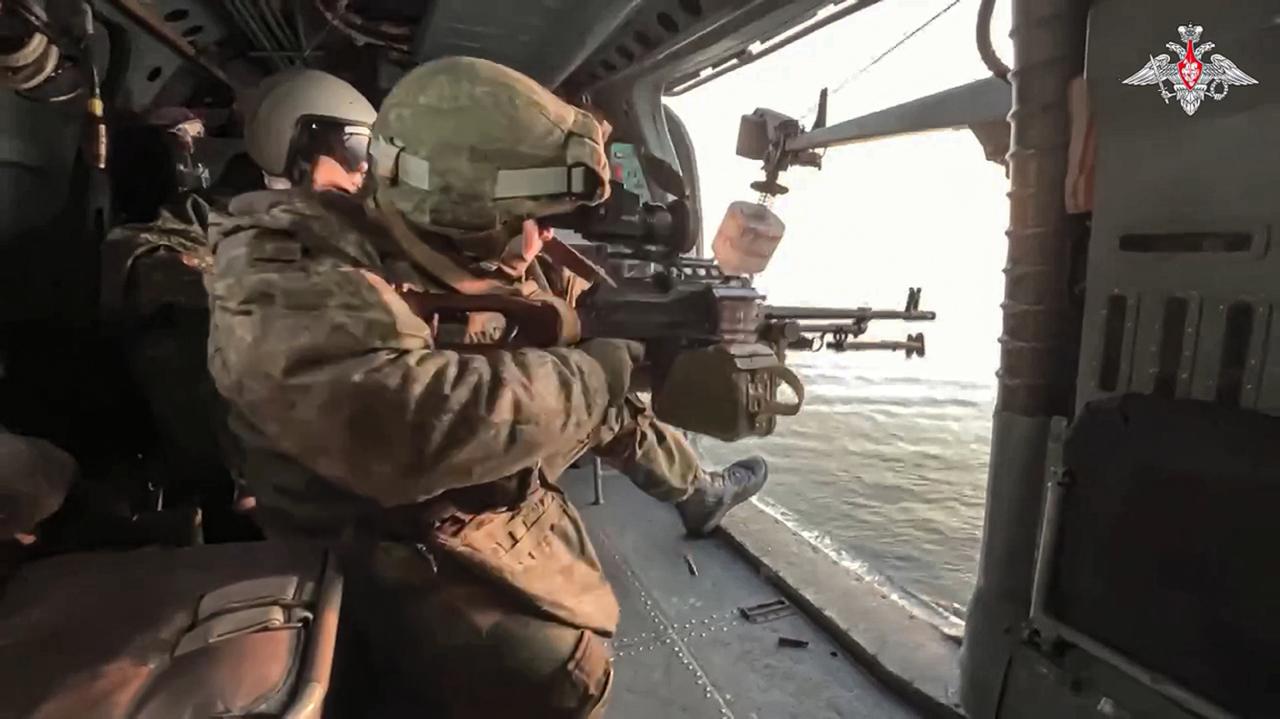
Future developments may include increased autonomy, swarm capabilities, improved sensor integration, and enhanced countermeasure resistance. The integration of AI could allow for more sophisticated decision-making and adaptive strategies.
Integration of AI and Machine Learning
AI and machine learning could enable drones to better navigate complex environments, identify and classify targets more accurately, and adapt to changing conditions in real-time. This could significantly increase their effectiveness and survivability.
Projected Costs and Potential Benefits
While the development and maintenance of advanced sea drone technology will incur costs, the potential benefits—in terms of enhanced defense capabilities and cost-effectiveness compared to traditional naval assets—are significant. The relatively low cost of production compared to larger naval vessels represents a substantial advantage.
Potential Future Applications Beyond Military Use
- Oceanographic research
- Environmental monitoring
- Search and rescue operations
- Infrastructure inspection
- Commercial shipping support
Impact and Implications: Ukrainian Sea Drone
The widespread adoption of sea drone technology, particularly autonomous systems, has profound geopolitical, ethical, and economic implications. The relatively low cost and ease of deployment raise concerns about proliferation and potential misuse.
Geopolitical Implications
The use of sea drones could significantly alter the balance of power in maritime domains, empowering smaller nations and potentially destabilizing existing power structures. It necessitates the development of new international norms and regulations.
Ethical Considerations
The use of autonomous weapons systems raises ethical concerns about accountability and the potential for unintended harm. International discussions are needed to establish clear guidelines and regulations.
Economic Impact
The widespread adoption of sea drone technology could create new economic opportunities in manufacturing, maintenance, and related services. However, it could also lead to job displacement in certain sectors of the maritime industry.
Future Scenario: Widespread Use of Sea Drones
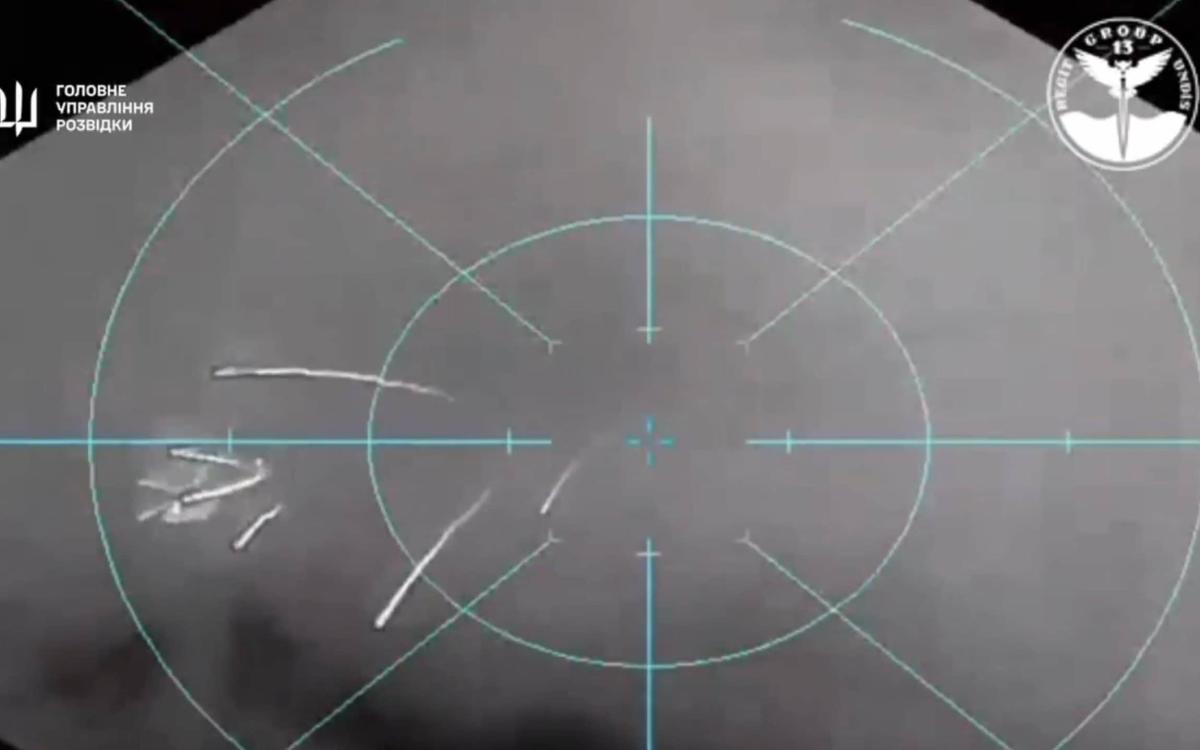
In a future scenario, sea drones might become ubiquitous, performing a wide range of tasks across various sectors. This could lead to increased efficiency and reduced costs in many industries, but also raise concerns about potential environmental impacts and the need for robust regulatory frameworks.
Ultimate Conclusion
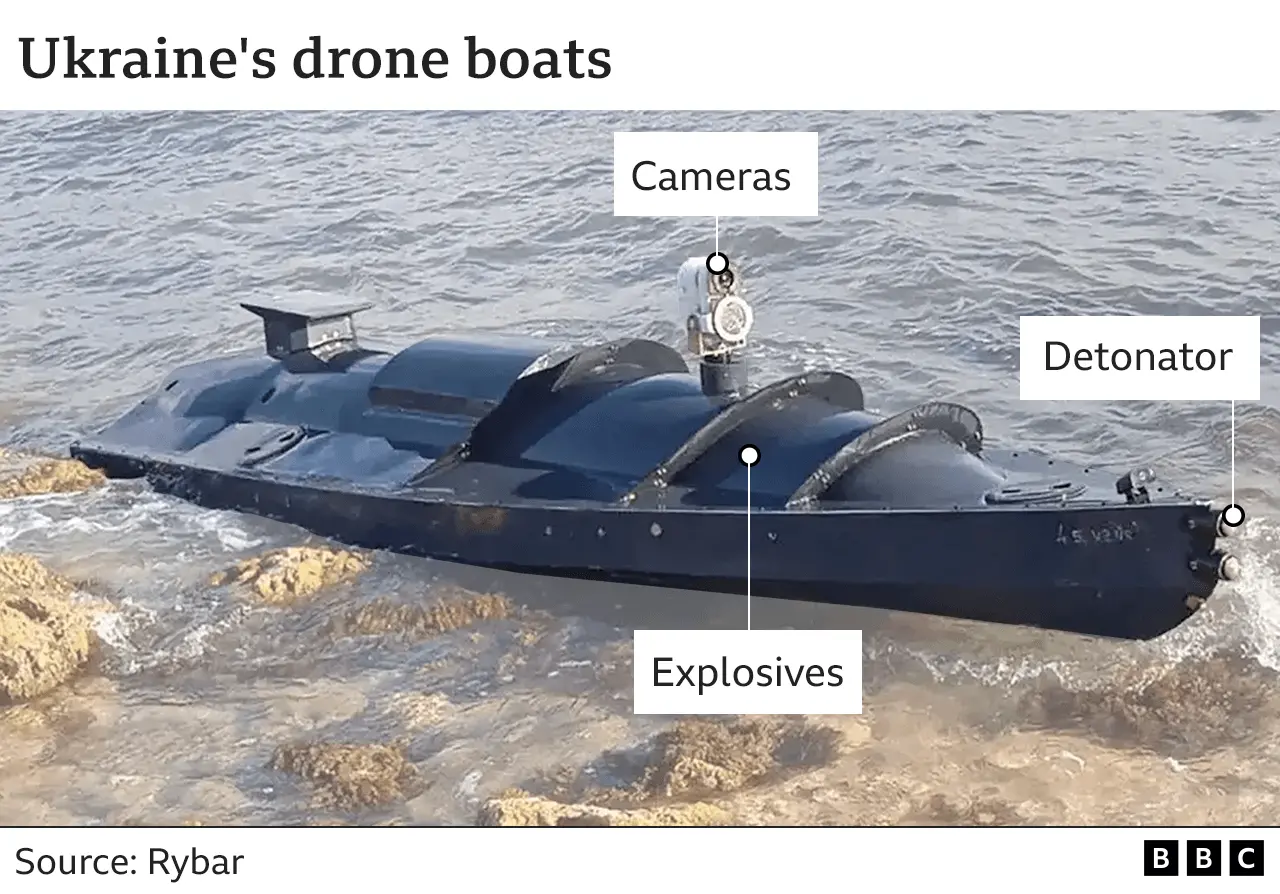
From disrupting naval operations to potentially revolutionizing maritime industries, Ukrainian sea drones represent a significant technological advancement. Their ongoing development and deployment will undoubtedly shape future naval conflicts and redefine the possibilities of autonomous maritime systems. The future of this technology is as dynamic as the seas themselves, promising both innovative solutions and complex challenges.
User Queries
How are Ukrainian sea drones powered?
Power sources vary depending on the drone’s size and mission, but common options include electric motors, internal combustion engines, and hybrid systems.
What kind of sensors do they use?
They often utilize a range of sensors, including cameras, radar, sonar, and GPS for navigation and target acquisition.
Who manufactures these drones?
Development and manufacturing often involve a combination of state-sponsored entities, private companies, and research institutions within Ukraine.
What is the cost of a Ukrainian sea drone?
Costs vary dramatically depending on the drone’s size, capabilities, and sophistication. Precise figures are generally not publicly available.
